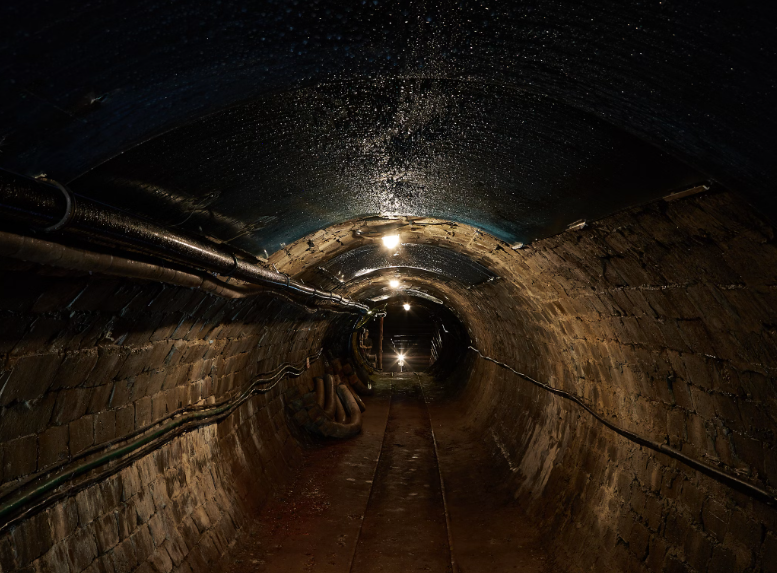Feb 21, 2024 | by Mary Scott Nabers
The Bipartisan Infrastructure Law provided approximately $11.3 billion for projects designed to rehabilitate land where old coal mines were located. Since Congress passed the law, funding has been allocated through the Abandoned Mine Land reclamation programs – about $725 million annually. The objective is to support communities and encourage them to clean up dangerous environmental conditions and pollution caused by coal mining operations. The hazards include acid mine drainage, which contaminates water sources, landslides and subsidence – a direct result of historical underground mining activities that poses significant risks to surface stability.
About $1.5 billion has been distributed in 2022 and 2023. That leaves almost $10.2 billion for future projects. Some states are also making funding available. Recently, Pennsylvania’s Department of Environmental Protection announced an additional $100 million for abandoned mine land reclamation projects. The state of Ohio’s Department of Natural Resources’ Division of Mineral Resources Management also announced recently that it will make $10 million available for these types of projects, but requests must be made by July of this year.
For over a century, abandoned mine drainage in Pennsylvania has significantly polluted the Tioga River. Funding from the federal government, the Susquehanna River Basin Commission, the state’s Department of Environmental Protection, Department of Conservation and Natural Resources and the Tioga County Concerned Citizens’ Committee will help construct a $68 million AMD active treatment plant to address water quality in the surrounding areas.
The new plant will actively treat five types of mine discharges once it is constructed. The effort will include implementing 11 miles of extensive pipework, which will be used to collect discharges from the river. The polluted water will then be conveyed to the treatment plant after collection. Plans also call for building five pumping stations to move water from various places to the plant. Construction is expected to begin late in 2024.

Photo by Martin Brechtl on Unsplash
The Pennsylvania Department of Environmental Protection awarded $24 million to a mine drainage project in Indiana County. The project will deliver a drainage treatment system to treat the acid mine discharge that pollutes Crooked Creek and its tributaries. Water that flows through abandoned mines can interact with minerals left exposed by coal extraction, acid, heavy metals and other pollution into the watershed. The polluted water has the potential to kill wildlife, contaminate drinking water, and leave long-lasting negative environmental impacts.
The drainage project will redirect all pollutants from the Ernest Mine Complex to a central discharge point, where a treatment facility will remove the contamination before the water is released into Crooked Creek. The objective is to restore the watershed and improve the land in numerous ways.
A subsidence project in Raleigh, West Virginia, is an environmental and public safety initiative. It will be designed to address land subsidence issues and is part of the broader efforts under the Abandoned Mine Lands program. Coal mining operations in the past have impacted infrastructure, ecosystems and risked safety in some residential areas. The project is a strategic response to these challenges, focusing on stabilizing affected ground to prevent further subsidence and rehabilitating the land for future use. Currently in the design phase, the project will focus on exploratory drilling and developing geological models to identify the subsequent construction efforts that will mitigate subsidence. Cost estimates have been placed at $10.4 million, and while the amount seems small compared with other projects, this one is considered critical in nature.
Officials in Vestavia Hills, a suburb of Birmingham, Alabama, recently greenlit an initiative to mitigate risks posed by former coal mines located within and adjacent to the Sicard Hollow Athletic Complex. This project is also smaller than most but extremely critical in nature. The $4 million project will carry out mass grading of an abandoned mine that presents a physical hazard to the community because of a dangerous highwall near the sports facility. The objective will be to reclaim 1,360 linear feet of the highwall. The effort is currently in the planning stages, but construction is expected to begin later in 2024. Funding of $10 million was recently granted to Alabama by the U.S. Department of the Interior.
In December, the Ohio Department of Natural Resources distributed $10 million in grant funding to mine reclamation projects in the state, including approximately $4 million for the city of Jackson. The funding will allow officials to carry out community development improvements to its downtown area as well as construct a state-of-the-art RV facility on an adjacent area that once was abandoned mining property. According to the Ohio Division of Mineral Resources Management, hundreds of thousands of mine acres in Ohio need to be rehabilitated. A cumulative cost for this very important effort is estimated at $528 million.
These types of projects are not the norm in most states, but they are the center of attention in the states of Kentucky, Pennsylvania, Virginia, Alabama, Ohio, and West Virginia. Other states with abandoned coal mine properties may not have as many polluted areas, but funding is available for all states. The funding not only removes dangerous and hazardous elements from the land, the projects also deliver property that is once again safe and available for all types of new initiatives.
About the Author:
As President and CEO of Strategic Partnerships, Inc., Mary Scott Nabers has decades of experience working in the public-private sector. A well-recognized expert in the P3 and government contracting fields, she is often asked to share her industry insights with top publications and through professional speaking engagements.
Tags: abandoned mine reclamation, acid mine drainage treatment, Bipartisan Infrastructure Law, coal mine cleanup, Community Development, environmental restoration, federal funding environmental projects, green initiatives, hazardous waste removal, Infrastructure Investment, land rehabilitation, Mary Scott Nabers, mine subsidence solutions, public safety initiatives, SPI, state environmental efforts, Strategic Partnerships, sustainable development






 RSS Feed
RSS Feed